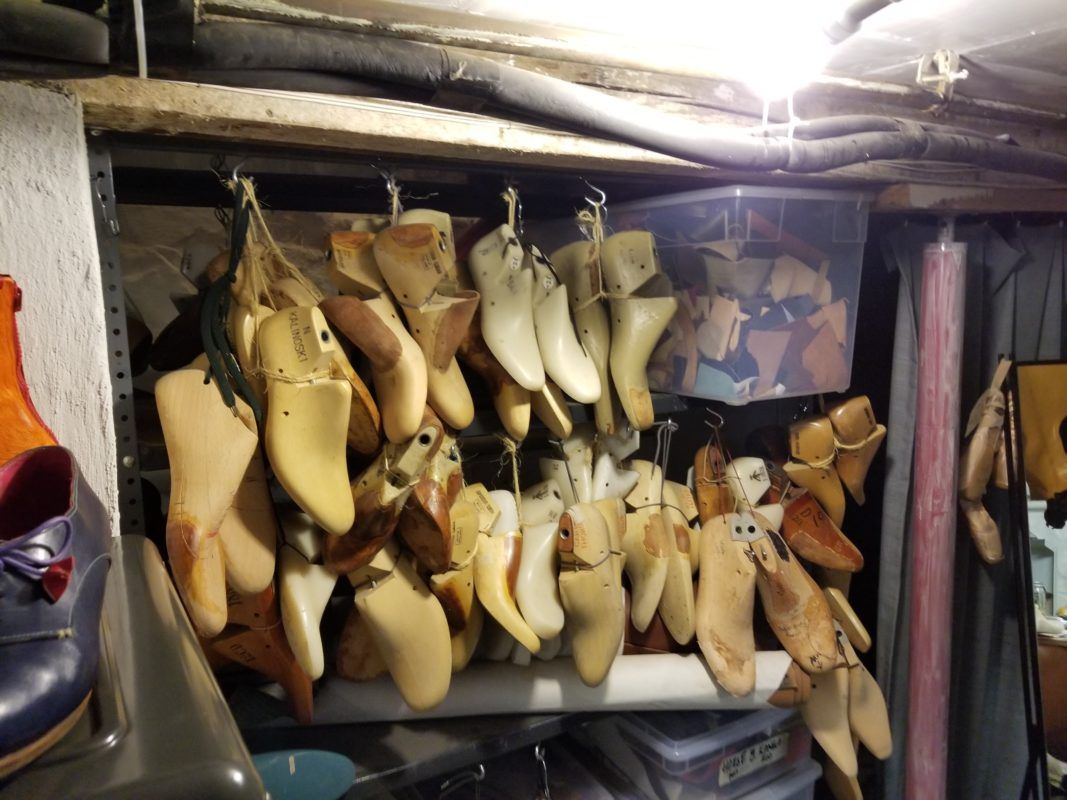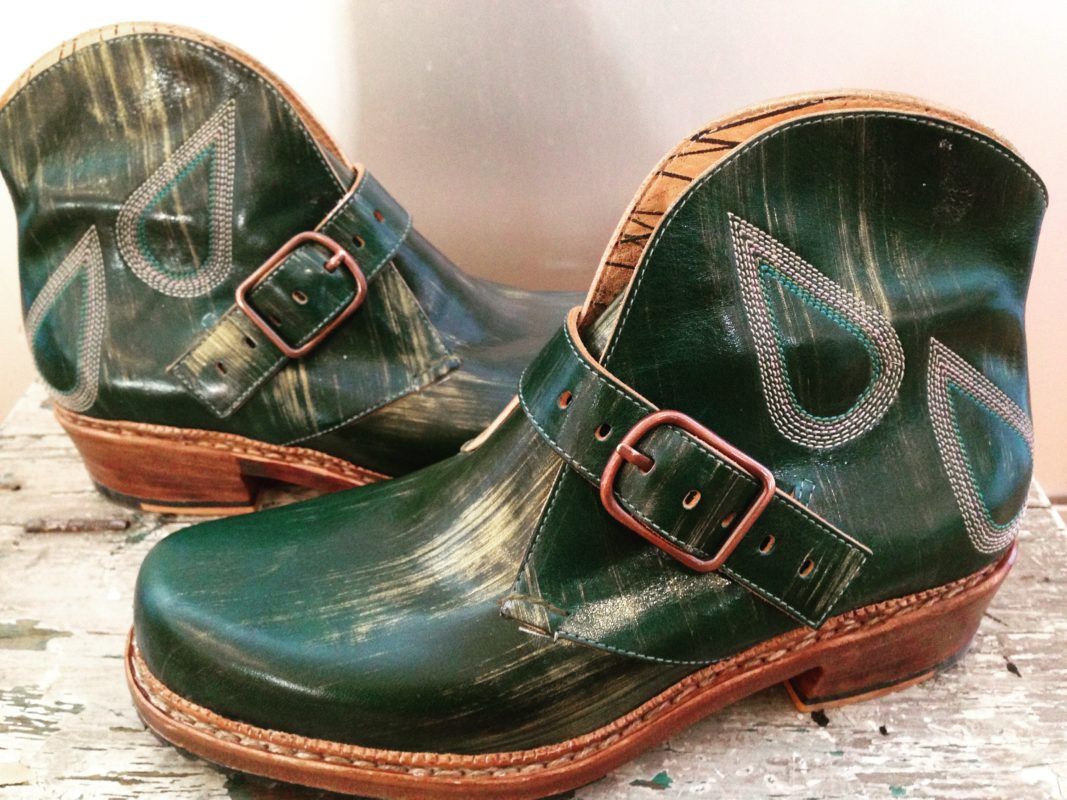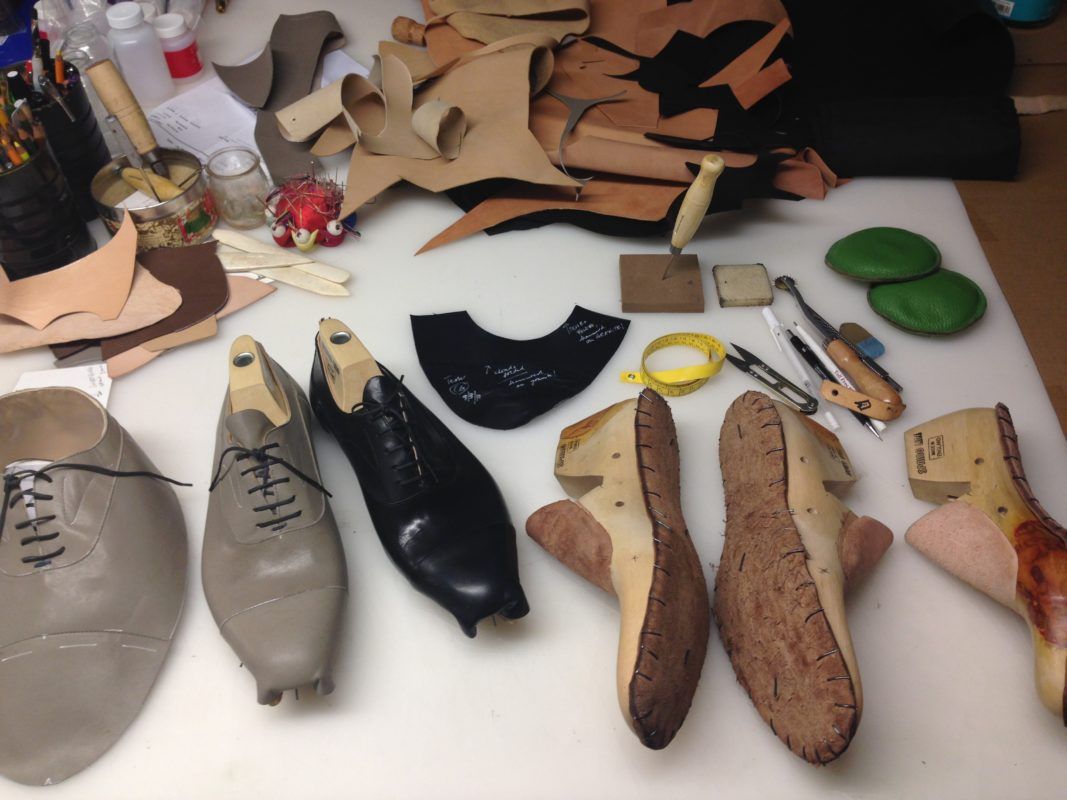Stiefelwerk Brings Old-Time Shoemaking to Prospect Heights


PROSPECT HEIGHTS – Even amid a crisis for small businesses in New York City, with sky-high rents and online shopping clobbering brick-and-mortar retail, some old-style businesses, like old-fashioned, hand-crafted shoemaking, manage to survive and to thrive.
Marika Verploegh Chasse, originally from Switzerland and a 20 year resident of New York City, owns and operates Stiefelwerk, a full-service shoemaking business wherein she designs and handmakes bespoke, or custom-made, shoes and boots; the term stiefelwerk is German for bootwork.
Verploegh Chasse often sweats through 10, 12, or even 14-hour shifts in her basement workshop below O.N.A., a boutique on Vanderbilt Avenue in Prospect Heights. Hand-crafted shoes and boots are extremely labor-intensive, she said, and she usually only completes one or two pairs per month, with each taking about 40 to 80 hours to complete. Custom-made pairs start at around $1,200, and can cost north to $3,000, owing to the amount of labor and attention that goes in.

“The whole thing is getting a last [a wooden model of a foot] made, or carved to shape, and then you make a fitter pair, which is like a cemented shoe for the client to come in and try on and see if the fit of the last works out,” Verploegh Chasse said in an interview with Bklyner. “And then sometimes I have to make adjustments, sometimes I have to make a few adjustments, so then we’re looking at two to three fitters if somebody has a shape that’s a little tricky.”
While the high price tag is sure to turn away most consumers, Verploegh Chasse says that the shoes are, understandably, of a substantially higher quality than their mass-produced brethren, and a wearer can expect them to last for up to 25 years. “They’re made for your feet,” she said.
The materials, which she says are top-of-the-line and key to the durability of the shoes, are sourced from such places as Austria, Germany, and the United Kingdom, while the leather Verploegh Chasse uses is tanned in Upstate New York. She is continuing to use leather for the time being, Verploegh Chasse says, but is interested in emerging technologies that would make non-animal leather a viable material, including 3D printing.

Verploegh Chasse originally came to New York to pursue art, but took a shoemaking course and fell in love with the craft, eventually studying in Europe before returning to New York to open her business, which she has owned for fifteen years.
Her background in fine arts and working under master artisans informed her shoemaking, with design quirks such as screen printing or secret details in the lining. Today, in addition to running her workshop, she also teaches a course called “Footwear: Design and Construction” at the Fashion Institute of Technology and the Rhode Island School of Design.

Verploegh Chasse, a polyglot who speaks English, German, Swiss German, French, Dutch, and some Italian, is the lone employee of her atelier. “It’s just me, myself, and I,” she said. Nonetheless, the business is not in any real need of scaling up, as she has few, if any, competitors in her niche.
“It’s basically a business that takes forever to build,” she said. “It’s very slow growing because I only have two hands.”




